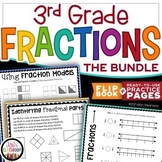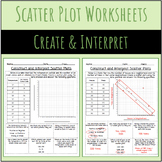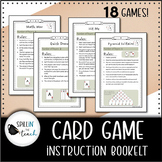19 results
High school precalculus laboratory microsofts

Vector Treasure Hunt
This activity is designed to teach the students about displacement vectors. There are three parts in four pages. In part II of the lab students make a hunt for other students to follow based on vectors. The next day, students go out, follow the directions and find the "treasure". Very fun activity that teaches the students the basics of vectors. Appropriate for grades 7-12 with an emphasis on beginning physics students.
Subjects:
Grades:
7th - 12th
Types:
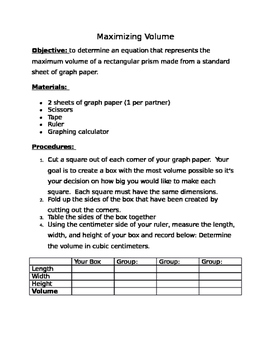
Maximizing Volume: Cubic Functions (popcorn lab)
Student will create boxes from graph paper. Their goal is to make a bog with the biggest volume possible. They will then determine an equation representing the volume of a box. They'll use a graphing calculator to determine the maximum volume and height of the box as well as the domain and range. at the end of the activity they will determine how many pieces of popcorn could fit in their box. the teacher will then give them popcorn to snack on. This activity is a HIT! especially with those
Subjects:
Grades:
10th - 12th
Types:
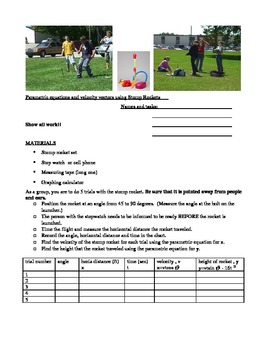
Vectors and parametric equations using stomp rockets
Using a toy called a stomp rocket which can be purchased fairly inexpensively online or at Toys R Us. I created this lab for my students in PreCalculus. My husband has also used it with Physics.
Subjects:
Grades:
10th - 12th
Types:

Clinometer Discovery Lab (Using Trigonometry)
I gave this project to both geometry and PreCalculus students. I gave them specific directions (included) on how to make a clinometer, but taught them nothing else about how to use them. They had to figure out how to use trigonometry to find the height of some objects in our commons (on a nice day, it would be awesome to go outside). Students used a lot of trial and error, and found how important it was to have an accurate diagram. I checked in frequently with each group-common errors included n
Subjects:
Grades:
8th - 12th
Types:
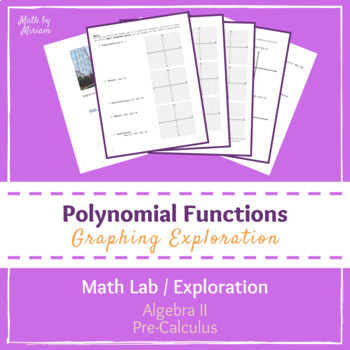
Polynomial Functions Exploration (PrBL PBL Activity)
This lab is designed to 1) introduce the relationship between a function rule, written in intercept form, and the zeros on a graph for all polynomial functions & introduce the concept of end behavior 2) allow students an opportunity to review multiplying polynomials and plotting coordinates precisely by hand. My students were lacking a strong Algebra 2 foundation so I designed this lab for them to raise them up to Pre-Calculus concepts (polynomial behaviors based on the way the function rule
Subjects:
Grades:
9th - 12th
Types:
CCSS:
Also included in: Polynomial Functions Resource Bundle (PrBL PBL Unit)
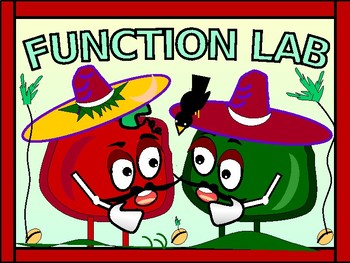
Math Lab:Exponential Functions and Seed Overproduction vs Time/DISTANCE LEARNING
My students totally enjoy doing the following math lab! They invariably find it to be both fun to do as well as informative. They readily relate to discussions within.
* Students work with a partner
* Students begin by a brief discussion about seed overproduction
* Students are provided with assumptions used to complete the lab
* Students work collaboratively to determine the number of seeds in a bell pepper
* Students find the average number of seeds in a bell pepper using the totals
Subjects:
Grades:
7th - 11th, Higher Education, Adult Education
Types:
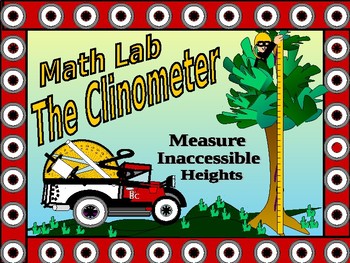
Math Lab: The Tangent Ratio, a Clinometer, and Inaccessible Heights
The following math lab is a follow-up to lessons on the Trigonometric Ratios:* In the lab, students follow steps to create a measuring device called The Clinometer* Students use the Clinometer to measure objects of inaccessible heights such as trees or flag poles.* To measure the objects, students use their Clinometer and apply the Tangent Ratio.* Students work with a partner. * One partner looks through the Clinometer while the other partner records the data required to calculate the tange
Subjects:
Grades:
7th - 11th, Higher Education, Adult Education
Types:

Modeling Length of Daylight Hours with Trig Functions
In this activity, students analyze data sets modeling hours of sunlight in three cities over the course of the year (Sydney, Juneau, and Washington D.C.) To complete the activity, students must:-- practice computing the parameters of sinusoidal functions and check their work by fitting an equation to the scatterplot-- use their equations to predict the hours of sunlight on specific days of the year-- use their graphs and equations to predict when pairs of cities will have the same amount of sunl
Subjects:
Grades:
9th - 12th
CCSS:
Also included in: Modeling Seasonal Daylight Length with Trig Functions
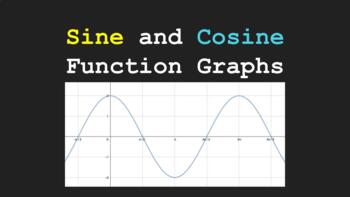
Discovering Sine and Cosine Function Graphs
In this activity, students will use a linked Geogebra to explore the graphs of sine and cosine functions. They will manipulate the amplitude, the period, the phase shift, and the vertical shift parameters to determine how changing those parameters in the function affects its graph. They will reflect on how the algebra of the function relates to its geometry. They will then reflect upon what they have done by coming up with an equation for the period of the functions, exploring the sine/cosine
Subjects:
Grades:
9th - 12th, Higher Education
CCSS:

Modeling Tides with Trig Functions
In this activity, students analyze data sets about water depth through the daily tidal cycle. While completing this activity, students:-- practice computing the parameters of sinusoidal functions and check their work by fitting an equation to the scatterplot-- interpret the meaning of different parameters in context-- determine how a verbal description of changes to the environment would impact parameter values-- introduce a new term to a basic sinusoidal function to incorporate changes in globa
Subjects:
Grades:
9th - 12th
Also included in: Modeling Tides with Trigonometric Functions
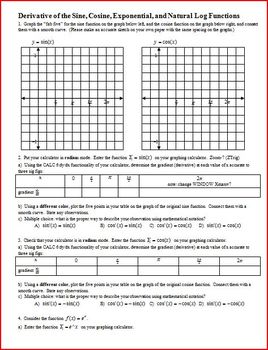
Derivative of the Sine Cosine Exponential and Natural Log functions (Editable)
To help my students see the connection between the sine, cosine, exponential, and natural log graph and their derivatives, I have them use the TI calculators to compute the derivatives. For the sine and cosine, they graph the derivatives directly on the graph; for the other functions, they use a table to verify their derivatives.
I use it within cooperative groups, and I circulate to make sure they are getting the purpose of the questions.
The file includes spiral review problems.
This works
Subjects:
Grades:
10th - 12th
Types:

Using Excel for Arithmetic and Geometric Series (Editable)
I think use of technology of the mathematics classroom should be based on tools that people actually use in the real world, and I think that a spreadsheet is one of the most powerful tools I can teach my students to use.
This worksheet is best used right after students have mastered arithmetic and geometric sequences, as it extends what they've done.
I use an earlier activity/worksheet (Introduction to Excel) before I use this one. Once they've gained familiarity with how Excel works, I have
Subjects:
Grades:
10th - 12th
Types:
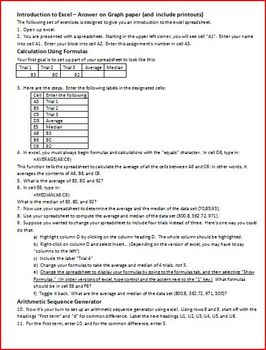
Introduction to Excel - use after arithmetic and geometric sequences (Editable)
I think use of technology of the mathematics classroom should be based on tools that people actually use in the real world, and I think that a spreadsheet is one of the most powerful tools I can teach my students to use.
This worksheet is best used right after students have mastered arithmetic and geometric sequences, as it extends what they've done.
It has them use formulas, the median and average functions, and then it has them write a spreadsheet for the quadratic formula, which is tough fo
Subjects:
Grades:
10th - 12th
Types:

Root Function Discovery in Geogebra
In this activity, students explore transformations on root functions. They determine what happens when the root is odd or even. The determine how to shift and stretch the function vertically or horizontally. Students also look at domain and range for odd and even root functions.
Subjects:
Grades:
9th - 12th
CCSS:

Math Lab: Investigating Volume/DISTANCE LEARNING/NO PREP
In the following lab, students enjoy a "hands-on" activity to learn the reasoning behind the formulas used in calculating for volume in two solids, the pyramid and the prism.
* Students draw the nets on poster board for a pyramid and a prism, given precise measurements.
* Students carefully cut the nets out and fold according to directions.
* Students use unpopped popcorn, uncooked rice, or dried beans to fill their solids.
* Students compare the volume of a pyramid and a prism with
Subjects:
Grades:
7th - 12th, Higher Education, Adult Education
Types:

Modeling the Business Cycle with Trig Functions
In this lab, students analyze GDP data from five fictional countries. To complete the activity, students:-- create scatterplots of their data using desmos.com/calculator (or other graphing utility)-- use their data sets to compute the parameters of underlying sinusoidal functions and use Desmos to compare their estimates to the data sets-- interpret the parameters of their equations in context by describing how the economies of each country compare and contrast to each other.-- are challenged to
Subjects:
Grades:
9th - 12th
CCSS:
Also included in: Modeling the Business Cycle with Trig Functions: Activity and Data Set
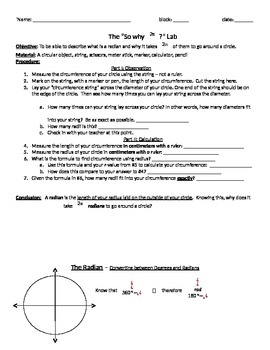
Radian Lab --> Unit Circle
Students use circular objects and string to derive the circumference formula and therefore define what a "radian" is. Students finish by finding a formula for conversion between radians and degrees and complete the Unit Circle in radians.
Subjects:
Grades:
6th - 12th
Types:
CCSS:
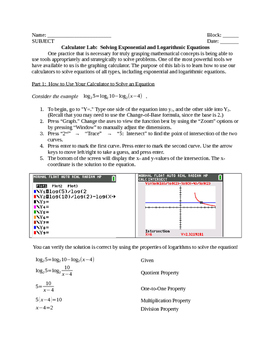
Solving Exponential and Logarithmic Equations Calculator Lab
Once students have learned how to apply the properties of logarithms and exponents to solve equations, they can use this lab to learn how to verify their answer using the graphing calculator intersect function. Step-by-step instructions are provided using one example, and further examples are provided. Students may work together or independently.
Subjects:
Grades:
10th - 12th
Types:
CCSS:
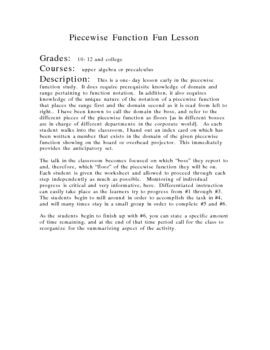
Piecewise Function Fun
This one-day lesson is good for early exploration of the piecewise function and how to obtain the graph of a piecewise function. Concepts such as domain and range and function notation are strengthened or assessed depending upon the learner. It is an activity which leads the learner step-by-step with group work possible and concludes with a whole-class discussion summary.
Subjects:
Grades:
10th - 12th
Types:
Showing 1-19 of 19 results

